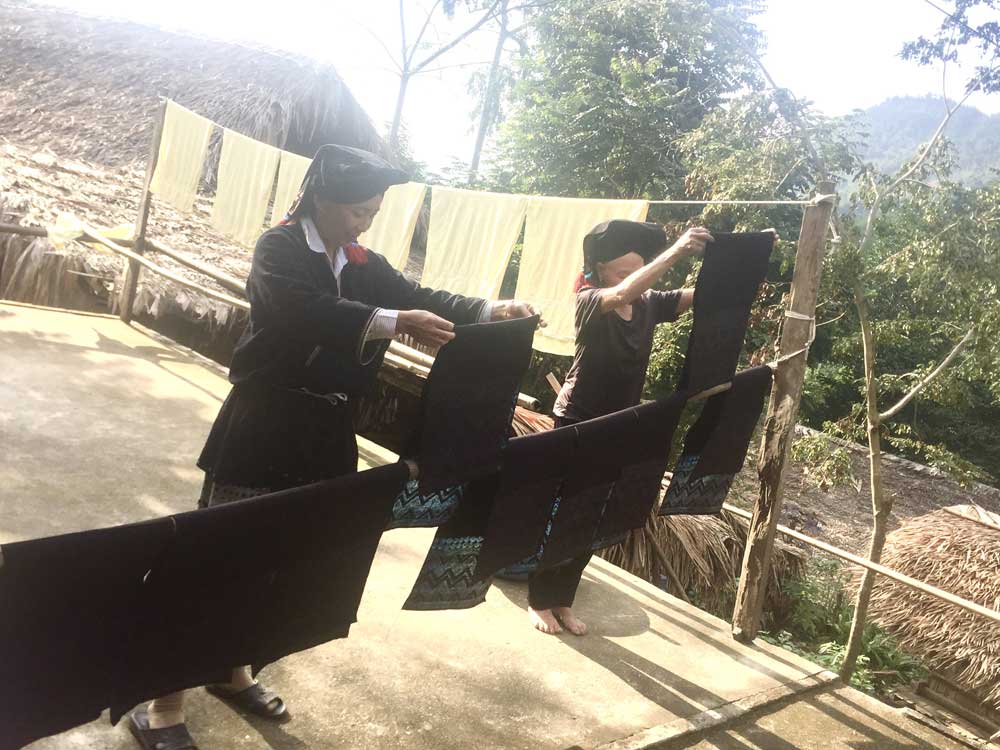(HBO) – Along with language, costume is a traditional cultural heritage of each ethnic group, which manifests their cultural identity as well as unique art and religious values.
Dao people in Sung hamlet of Cao Son commune (Da Bac
district) maintain the traditional craft of indigodying and making
traditional costumes.
Hoa Binh is home to six ethnic groups – Muong, Kinh, Thai, Tay, Dao and Mong.
Generally, the groups share similarities in culture and religions, but they
also have their own traditions. Each group has particular patterns on their
costume, which shows their own traditional culture and practices.
In order to preserve and promote the value of traditional costumes of local
ethnic groups, in the 2021-2030 period, the province will conduct surveys and
evaluations to make a list of intangible cultural heritages of traditional
costumes of local ethnic groups.
Meanwhile, the province will enhance communications on mass media and other direct
forms, while introducing the costumes in video clips promoting local tourism.
Hoa Binh has encouraged local residents to wear their ethnic group’s
traditional costumes in special events such as New Year, festivals and
weddings.
Local officials, teachers and students are encouraged to wear their costumes
once per week in ethnic minority boarding schools.
Pavilions to display, introduce and sell the traditional costumes of ethnic
groups have been arranged in hotels, restaurants and tourist destinations
across the province. Dossiers on one or two traditional costumes, or on
traditional art or craft of making traditional costumes will be made to seek
recognition as national intangible heritage.
At the same time, a number of models preserving and developing the material
sources for making traditional costumes of ethnic groups will be developed. The
conservation and development of traditional costumes will be associated with
tourism promotion, while the costumes will be introduced in local
community-based tourism sites. The province will also request for recognition
of local costume makers as meritorious artisans in traditional handicrafts./.



